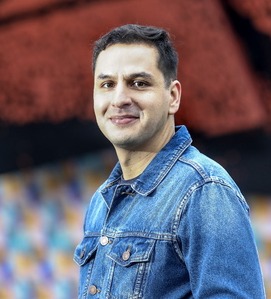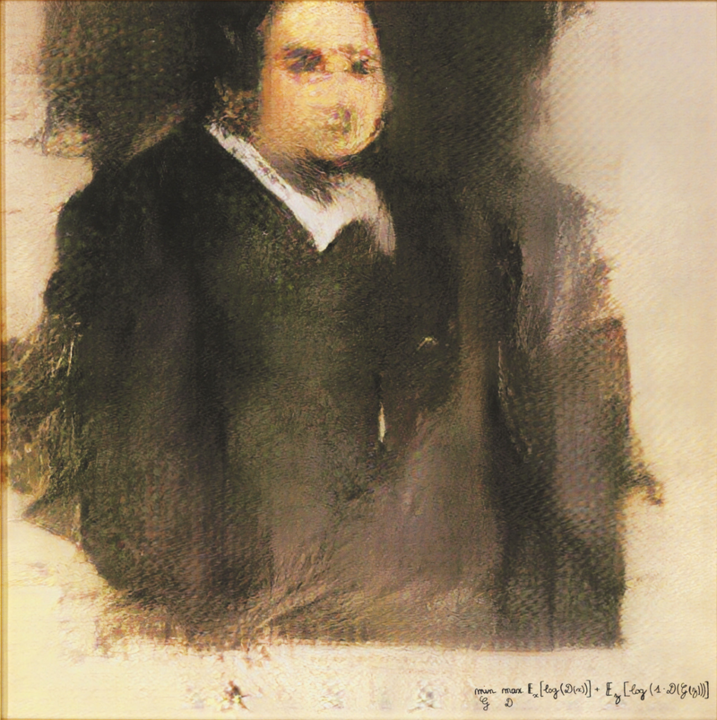Art in times of AI

Leonardo Arriagada Beltran conducted his PhD research on the interface of computer-generated art and the constantly evolving field of Artificial Intelligence (AI). He will defend his Phd thesis on 21 September. His research offers valuable insights into how AI is redefining artistic creativity.
AI-generated artworks are often more abstract than human art, but can be considered genuine when they satisfy the requirements of Computer and Cognitive Science, as well as Art Theory. Moreover, should AI-generated art adhere to the same social paradigms as human art? Time to ask Leonardo some questions.
What is AI-generated art?
AI art emerges from the dynamic interplay between AI and the creative process of making art. This collaboration has evolved naturally over a significant period, stemming from the integration of computer tools. A tangible example of this fusion is evident in modern software like Photoshop, which now incorporates ‘neural filters’ designed to enhance and transform photos. These filters are built upon the intricate foundation of artificial neural networks, which serve as the cornerstone of contemporary AI.
The intrigue deepens when AI transitions beyond being a tool and steps into the role of a genuine artist in its own regard. Therefore, I propose the concept of ‘AI-generated artwork.’ This idea encapsulates three vital elements: firstly, the autonomous generation of fresh and surprising ideas or artifacts by the AI; secondly, the presence of an internal assessment mechanism integrated into the AI’s processes; and thirdly, the recognition of these AI-created works as deserving appreciation by human audiences.
What makes an AI-generated artwork different from human-created art?
My research reveals a significant distinction: AI-generated artwork often inclines towards greater abstraction when compared to pieces crafted by human artists. This contrast revolves around whether the art creation process involves drawing from emotions—an essential aspect deeply ingrained in the essence of art.
When we encounter art created by humans, we are witnessing, to varying degrees, the perspective of that particular human artist. This perspective might carry influences of gender, politics, aristocracy, and so forth. An AI-generated artwork can simulate this underlying influence present in art, but it can also choose not to. In the latter case, we encounter creations free from such influences, offering us a pure aesthetic appreciation.
Can AI truly create something “new” and original?
Absolutely, without a doubt. We now have algorithms like Generative Adversarial Networks (GANs) that can learn in an unsupervised manner, by recognizing patterns in datasets, to create, for instance, a brand-new piece of art. At present, numerous examples of such applications exist. Notably, one that gained attention for being touted as the first AI-created artwork auctioned at Christie’s is the portrait of Edmond de Belamy.
I can assert that, according to the requirements of Computer Science, Cognitive Science, and Art Theory, this painting is indeed an artwork created by AI with minimal human supervision. To be specific, a GAN was provided with a dataset of historical portraits, and the AI generated a new one for us.

What sets the portrait of Edmond de Belamy apart?
Edmond de Belamy exemplifies my proposed concept of an AI-generated artwork. The specific method employed involved a GAN, comprising two subnetworks: a generator and a discriminator. The generator endeavors to craft realistic images by drawing on a vast dataset of portraits, while the discriminator seeks to differentiate real from synthetic images. A competitive interplay unfolds between these two components, driving enhancement until the generator produces images capable of deceiving the discriminator.
This piece satisfies three essential aspects of an AI-generated artwork. First, it showcases autonomy by adapting its objectives autonomously through unsupervised machine learning. Secondly, The artwork manifests novelty and surprise by creating hitherto unseen and unexpected compositions. Lastly, an internal evaluation mechanism is inherent in creation of this piece, enabling self-assessment and the refinement of its output.
Moreover, Edmond de Belamy stands as a candidate for aesthetic appreciation, subject to judgment by human audiences based on artistic merit.
What can you say about the interplay between AI-generated art and society?
This research prompts a fundamental question: must AI-generated art adhere to the same social paradigms as human art? This viewpoint is rooted in AI lacking human experiences. The core issue isn’t replicating human artistic expression but rather the potential for AI to generate art. These artworks perceive and experience the world differently. They’re closely connected to Big Data, a deeply social entity reflecting collective human behavior. This link to societal dynamics underscores their aesthetic value, evidenced by their favorable reception in blind tests using a limited subset of Big Data. Optimistically, expanding the scope of Big Data could yield creations surpassing human imagination.
More news
-
18 November 2025
What about the wife beater? How language reinforces harmful ideas
-
03 November 2025
Menopause in perspective: How the media influences our perception
-
23 October 2025
Nine UG researchers awarded Vidi grant
